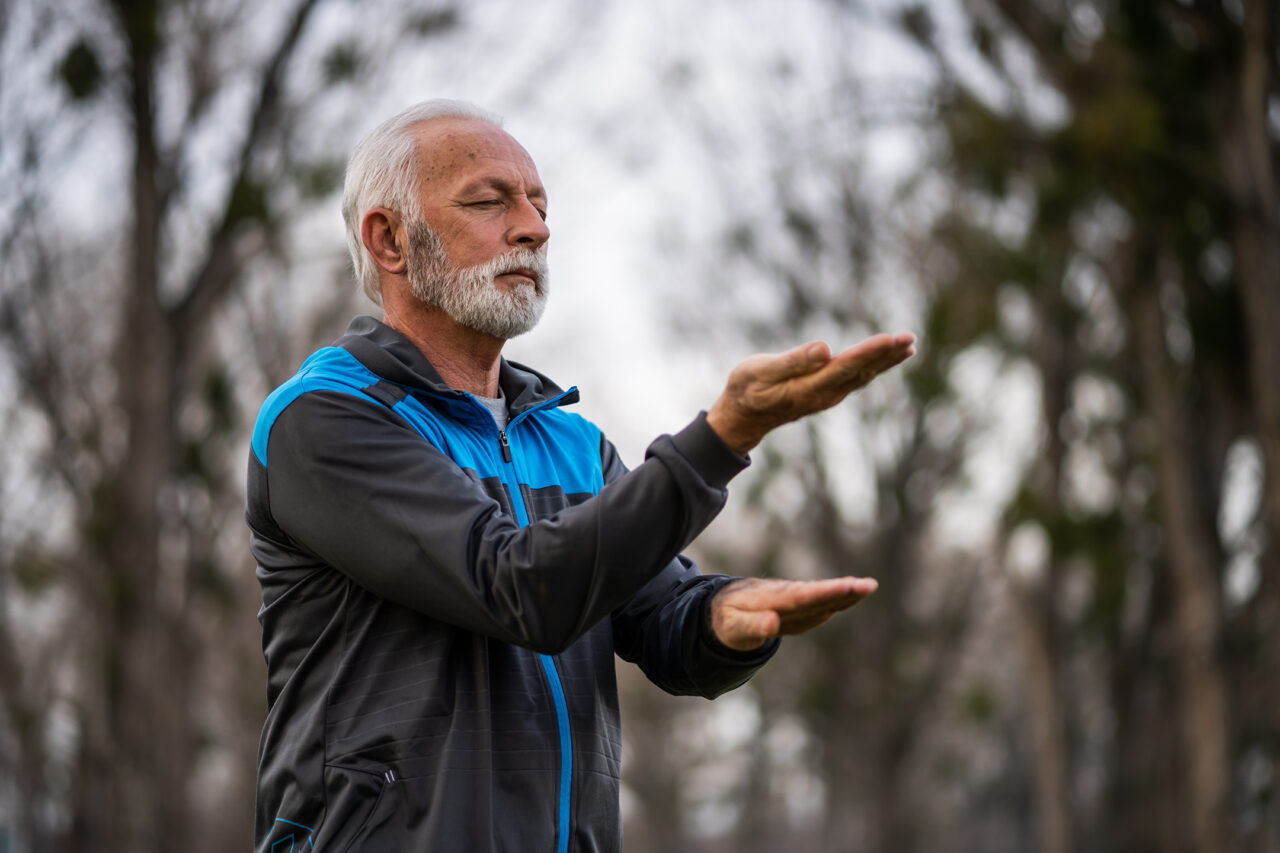 BY Victor S. Sierpina, MD, WD and Laura Nell Nicholson Professor of Integrative Medicine, Professor of Family Medicine at UTMB-Health and the John Sealy School of Medicine
BY Victor S. Sierpina, MD, WD and Laura Nell Nicholson Professor of Integrative Medicine, Professor of Family Medicine at UTMB-Health and the John Sealy School of Medicine
In stillness, all things are healed. – Taoist proverb
The most recent edition of Explore: Journal of Health and Healing, a leading publication in Integrative Medicine, published a systematic review and meta-analysis by Bahar Aras and co-authors that examined the effects of Tai Chi on functional mobility, balance, and falls in Parkinson’s disease.
See https://pubmed.ncbi.nlm.nih.gov/34952799/ for the full article.
As a practitioner of Tai for 40 years, the application of this area in health and healing has been long been of interest to me. I still start every day with at least a half hour of Tai Chi movement, either in the pool or on land. I initially studied for seven years with Tai Chi Master Waysun Liao in Oak Park, Illinois, who also encouraged me to study acupuncture, which incorporates the energetic and healing principles of Tai Chi.
While less well-known or available than yoga, Tai Chi shares many characteristics of yoga, including breathing practices, healthful movement, postures, meditation, focus on mindfulness, and body awareness. Tai Chi is practiced primarily with standing movements, while yoga has many floor or seated postures/asanas. The standing format can make Tai Chi more accessible to older adults, including those with Parkinson’s. Like with yoga, sitting Tai Chi is also an option for those who cannot stand for prolonged periods.
Developed originally as a martial art in the Shaolin temples of China, this slow-moving, ballet-like practice is now becoming more widely known. With teachers being more available and with the ubiquity of the internet, online, and YouTube options regarding basic forms and meditations, anyone can learn to do Tai Chi. I strongly recommend a book by my esteemed colleague, Dr. Peter Wayne: The Harvard Medical School Guide to Tai Chi, which offers a 12-week course on Tai Chi, including Qi Gong breath and energy work as well.
The Explore article describes some of the mechanisms of how Tai Chi can be useful to Parkinson’s patients. Among these is the slow, repetitive shifting of weight from one leg to another, challenging the balance control system to maintain its center of mass within a changing base of support. This mechanism is likely the same reason that Tai Chi has long been shown to reduce fear of falling in older adults, including those without Parkinson’s Disease.
Tai Chi has a moderate aerobic benefit despite not raising heart rate much or at all. Breathing is deep, slow, and rhythmic, thus calming the parasympathetic and sympathetic nervous systems and reducing the stress response. Balance, strength, flexibility, and motor functions are improved. Tai Chi improves physical function in Parkinson’s patients by reducing dyskinesia and bradykinesia (slowness of movement), thus helping improve posture and the ability to walk.
Parkinson’s disease is a progressive disease despite medications that help with symptoms such as tremors, rigidity, and bradykinesia but do not always improve postural stability, balance or reduce fall problems as well. Postural stability is central to the quality of life in patients with Parkinson’s, a fact that any of us who have cared for them understand very well. This article also found that Tai Chi was superior to interventions such as resistance training, stretching, and walking exercises for improving balance and reducing falls in patients with Parkinson’s.
The Parkinson’s Foundation has endorsed Tai Chi, among other exercise modalities, as part of a holistic approach to this condition. Their website has several useful resources and podcasts: https://www.parkinson.org/search/node?keys=tai+chi&op=
The meta-analysis reviewed 601 systematic reviews and distilled them down to the 16 highest quality ones. The authors conclude that more studies of higher quality are needed to substantiate and refine the benefits and application of Tai Chi in Parkinson’s patients. The styles of Tai Chi, of which there are several, frequency, duration, appropriate coaching, and teaching models would all be areas for further comparative research.
In the meantime, primary care doctors and neurologists who manage patients with Parkinson’s ought to consider recommending this ancient and gentle movement system, particularly early in the course of the disease, to improve quality of life, reduce fall risk, improve postural stability, balance, strength, flexibility, mood, and a sense of self-efficacy. Motion is lotion.


